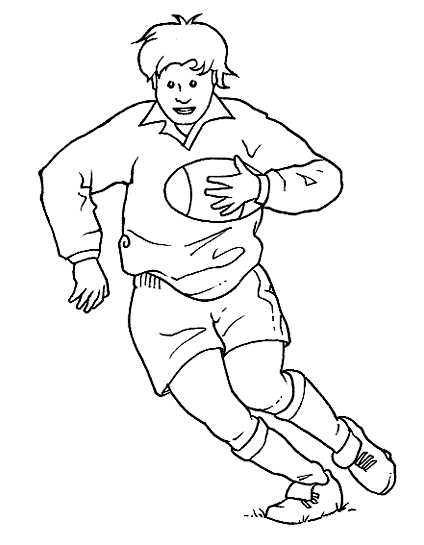More dynamic rugby (Inglés)
 Our friend Manuel Becerra, leaves us this interesting article, to change the rules of the game, to make it more dynamic.
Our friend Manuel Becerra, leaves us this interesting article, to change the rules of the game, to make it more dynamic. NEW RULES
The changes that come in the rules of the game
Beginning next year there will be changes to the rules to boost the game a little more.
Pierre Villepreux, player and coach of the XV of France along with Jean-Claude Skrela who reached the final of the RWC 1999, talks about what will be a big step for rugby: "Streamlining the game, creating spaces, to facilitate understanding newbies, which is more pleasing to see and also make it easier for arbitration. It is not a revolution but an evolution, and that these new rules will not weaken rugby. The phases of conquest, and the dispute will always present. "
Villepreux worked for three years to try and give rugby another dimension and last October 16 introduced the new rules of rugby.
The team was formed with their colleagues in the Committee on Rules of the IRB, chaired by Bill Nolan and composed by Rod Mc Queen (AUS), Graham Mourie (NZL), Ian Mc Intosh (RSA), Ritchie Dixon (SCO) the head of the IRB referees, Paddy & O Brien (NZL), responsible for development of the IRB, Bruce Cook, Steve Griffith, a doctor, Mike Molloy and the active presence of Bill Beaumont and Syd Millar, President of the IRB.
"We also turned to former players and players in assets, as well as the referees. In addition, we tested these changes, particularly in South Africa, at the University of Stellenbosh, more specifically, and the results were satisfactory. Now, will the federations that should ensure this link, testing these new standards, so that they can finally enter into force in the season 2008-2009. "
The new rules, Reviewed by Villepreux
Mauls: going to be able to collapse although this does not mean a penalty.
Villepreux says: "The teams will need to look for other solutions."
Lines fast: the player will no longer be forced to throw the ball right to recover or pasarsela a companion. You can also pass it back, do not distance. Villepreux says about it: "This will offer more choices to the attackers."
Lines, number of players: both teams are free to choose the number of players who will be in training. Commentary by Villepreux, "whoever will seek adjustments with many more possibilities and combinations."
Ban kick to touch in the 22 meters: if in receipt of an air ball between lines 22 and 40 meters, which recepciona is tackleado but his companions arrive in clean, be allowed a pass to a player in their 22 meters, but the latter may not kick directly to the line. The ball will have to chop before leaving the line to be valid. If not, there will be a line for the opponent at the kick. Comment: "Prima attack, in both directions. Or are attacked from the 22 or kicks the ball allowing the adversary to these re-attack. "
Scrums ordered: the backs of the two teams must be 5 meters from the foot of the last foot of the scrum. The half scrum will be the only one who may be close to the formation. The man in France explains: "Here the raw attack, with the possibility for two teams that in the event of winning the ball, you can throw the backs even more spaces. The defense-thirds lines or backs- will be more far to tacklear. "
Tackleador-tackleado: the attacker tackleado (placado) should release as quickly as possible the ball. If not, there will be free kick (coup punishment) for which it stands. Villepreux comment: "It is to some extent to rehabilitate the step because the attacker must avoid being tackleado with the ball in their hands. The fluidity of the game will increase. "
0 comentarios